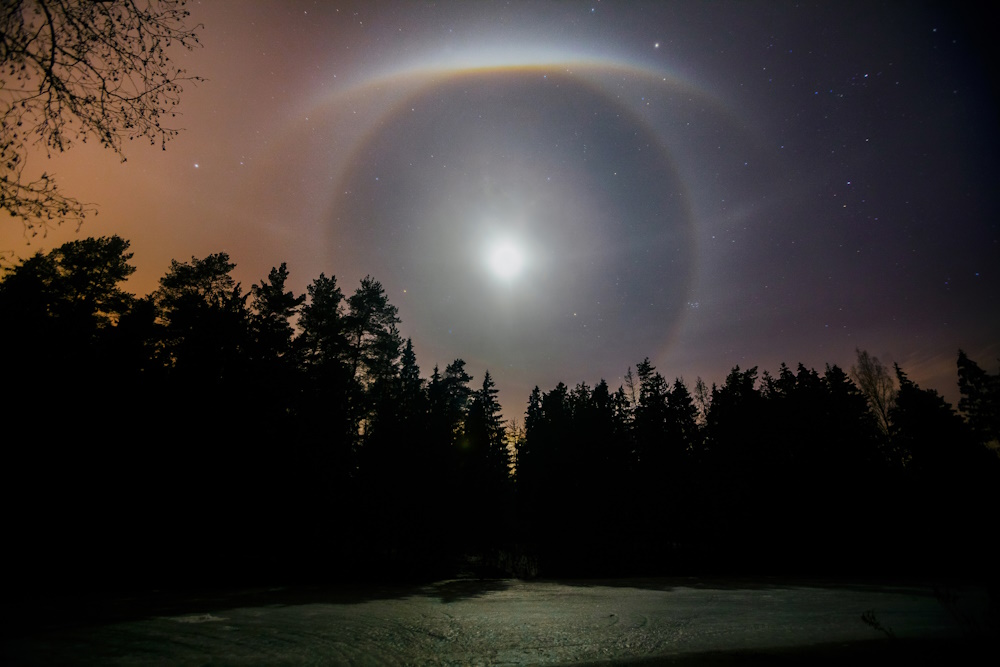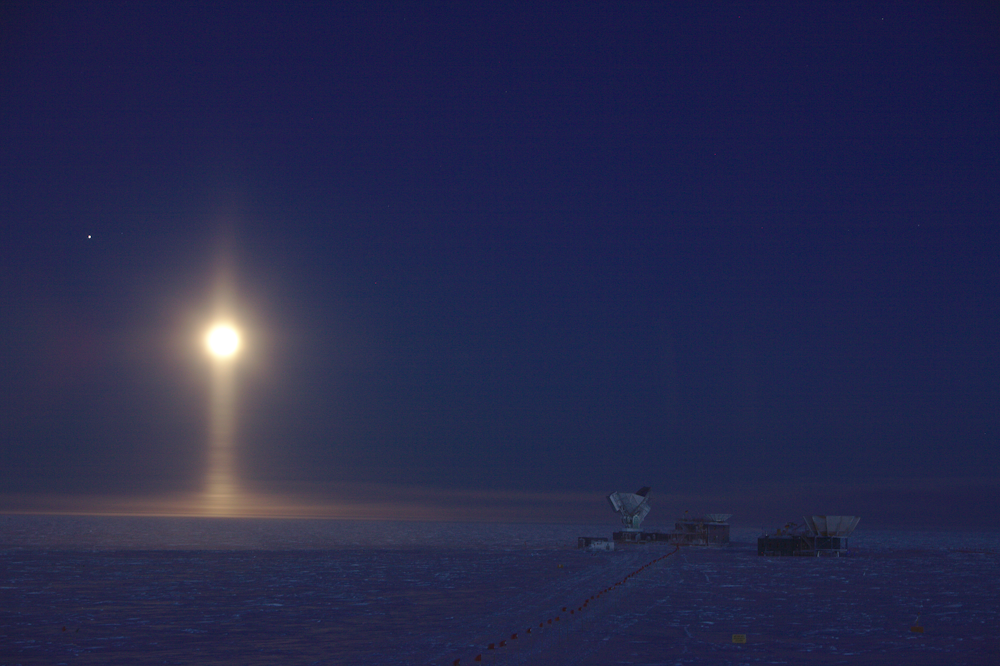Astronomy 2018
Shortlisted entries in the Astronomy category from the 2018 Royal Society Publishing Photography Competition.
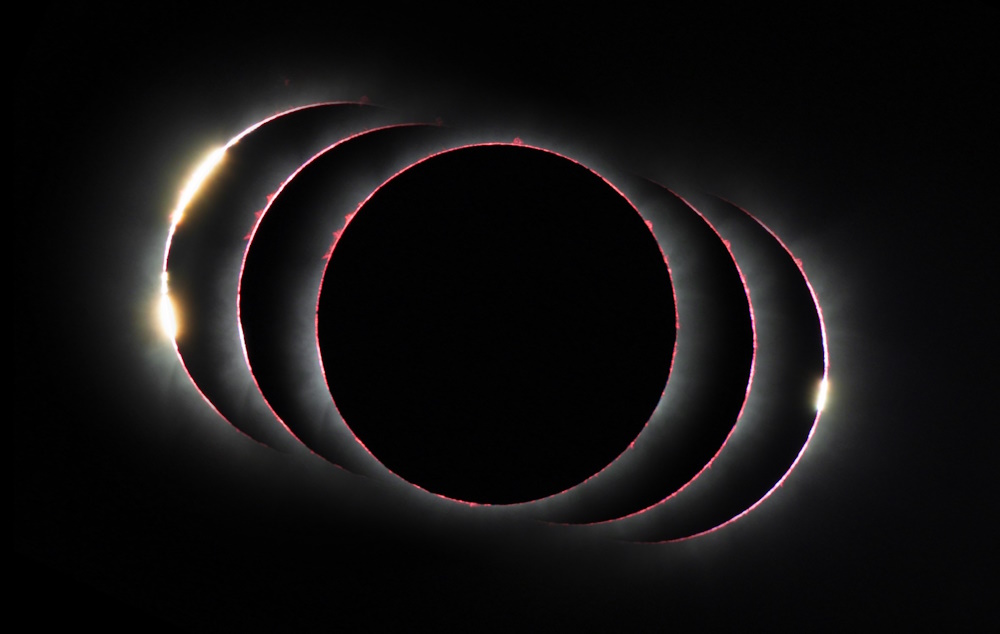
Competition Winner 'Three diamonds in the sky' by Petr Horálek. 'A story about total solar eclipse on November 3rd, 2013. When the eclipse started (on left side of the image), there was a two part diamond ring, which was unusual. It is caused by the angle diameter of the Moon in this case of hybrid eclipse. The magnitude of coverage from Pakwero, Uganda, was just 1,00259, which means the Sun's photosphere could easily shine above two different locations of lunar limb at the same time. The next hybrid solar eclipse will occur in April 2023 over western Australia and Indonesia. Canon 6D, Rubinar 1000/10, ISO 250, 5×1/500 s, Vixen GPD-2 mount.'
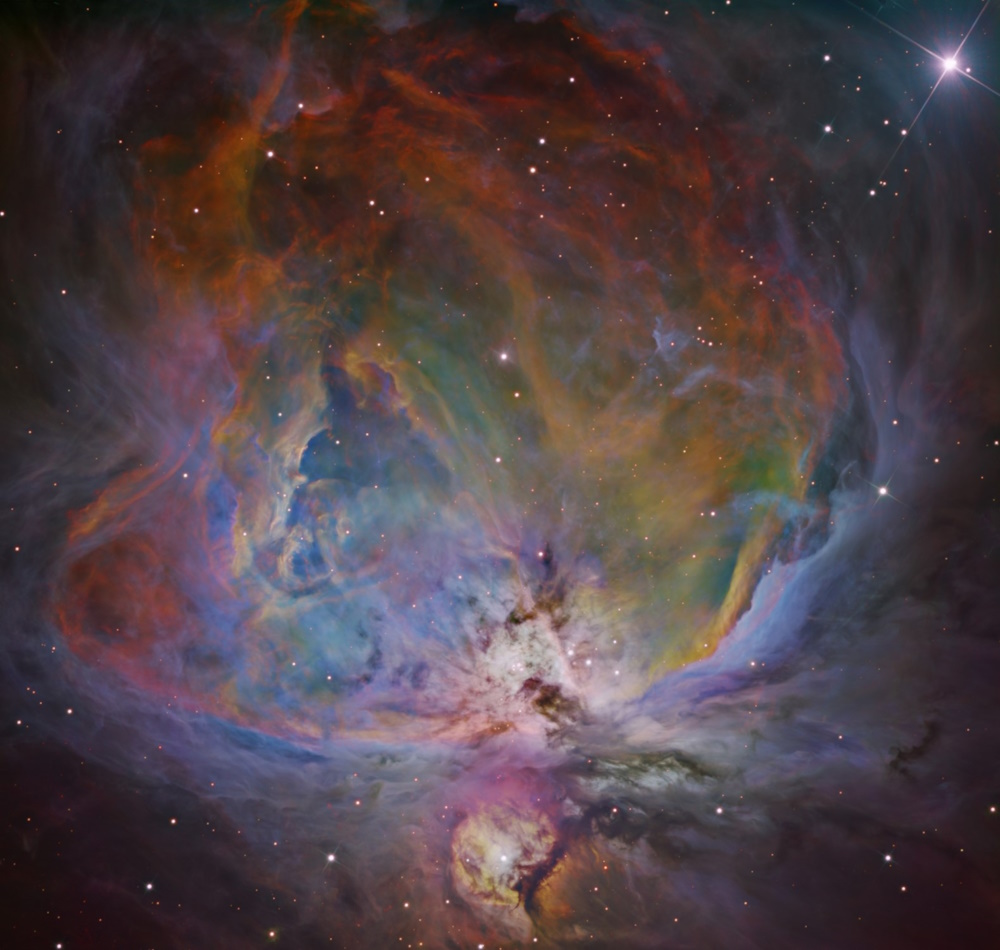
Astronomy runner up 'The Orion Nebula' by Bernard Miller. 'This is an image of the Orion Nebula processed with a 6-filter color mapping process. This process combines data from six different filters (Red, Green, Blue, Ha, SII, and OIII). The resulting image contains detail and color not usually seen with normal RGB processing. This image is a combination of over 39 hours of exposure taken with a CDK-17 telescope and FLI Pl16803 camera over a span of six weeks in November and December of 2017.'
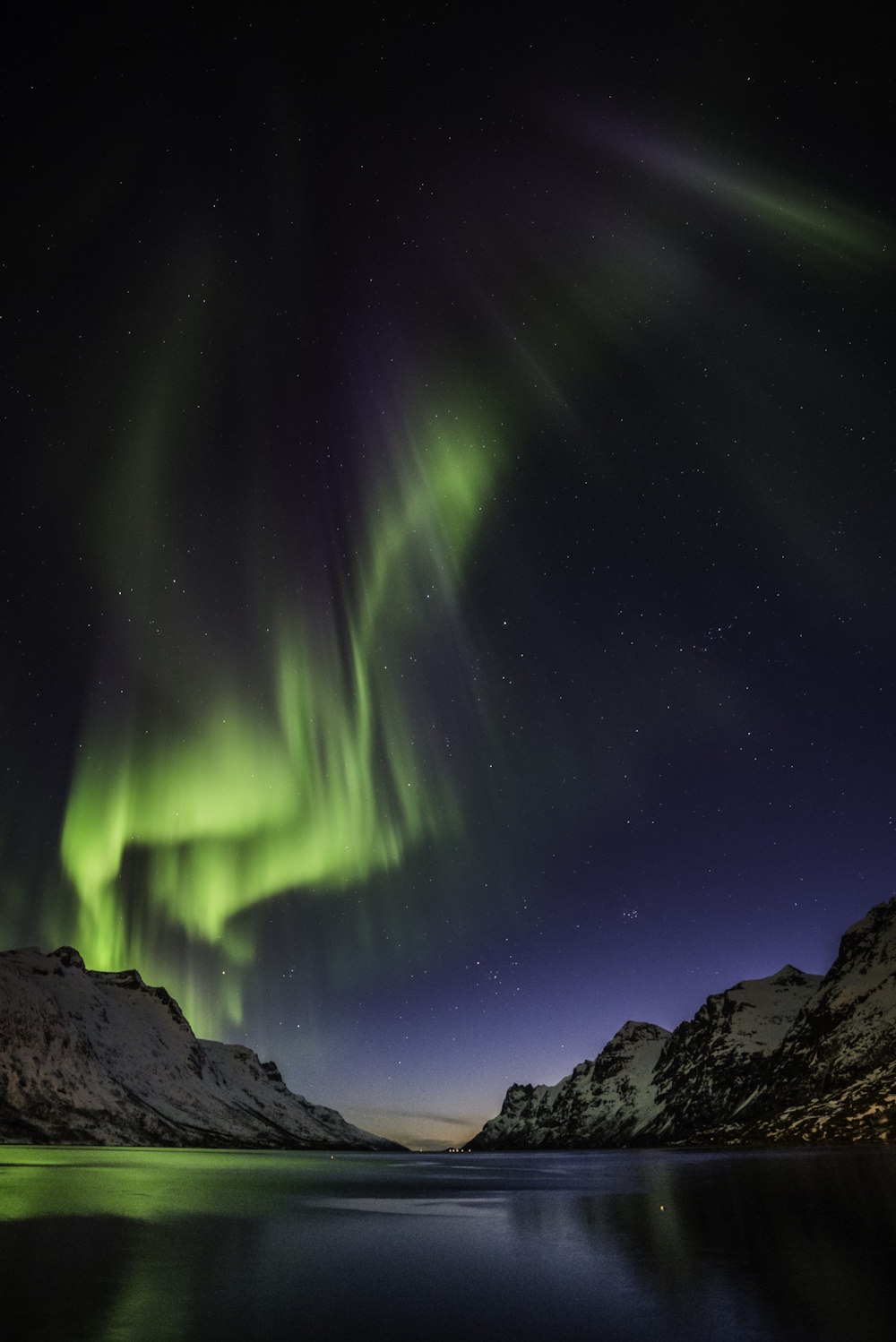
Astronomy Honourable mention 'Magic night' by Lorenzo Ragazzi. 'Every-night life in Northern Norway. Since I moved to the world's northern most university, almost every night I admire the phenomenon of the Aurora Borealis. This photo was taken in Ersfjordbotn on the island of Kvaløya near Tromsø, during a clear night at the end of twilight. The Northern Lights is a luminous and multicolored manifestation that occurs in the Earth's atmosphere, typically near the Arctic and Antarctic polar latitudes. The Aurora is generated by the interaction of swarms of charged particles (the solar wind) with the gases that make up the ionosphere, the most external part of the earth's atmosphere, which extends between 85 and 600 km altitude. The solar wind is a current of charged particles that, with varying intensity, is radiated by the sun in space. 95% of the solar wind consists of protons and electrons, in more or less equal parts. The remaining 5% is helium. Its speed ranges between 300 and 900 km/s (therefore between 330 and 1000 times slower than light). To reach the planet Earth (the distance from the Earth to the Sun is 149.6 million km) the solar wind takes between 2 and 9 days. Camera: Nikon D750, Lens: Samyang 14mm f/2.8 ED AS IF UMC, ISO 1250, Exposure 4,0 sec at f / 2.8, Focal Lenght 14 mm. Standard post processing made with Lightroom. Tone (Exposure, Contrast, White-balance, Highlights), Presence (Clarity), Region (Lights, Darks, Shadows), Cropping for horizontal alignment.'
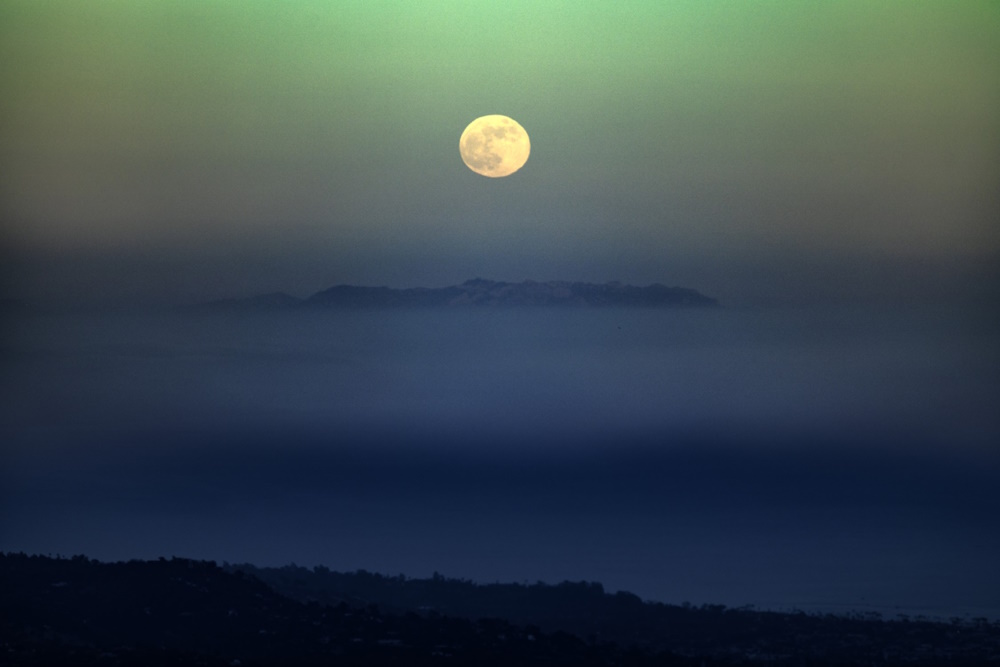
Astronomy Honourable mention 'Strawberry Moon Rising Over Santa Barbara' by Iair Arcavi. 'The Strawberry Moon, the full moon of June, rises over Santa Barbara, CA. The name comes from the Algonquin tribes of Native Americans, who used this full moon as their sign to harvest ripening strawberries. Of course, astronomically, it's pretty much the same as every other full moon occurring about once every 29.5 days when the moon is opposite the sun from the Earth's point of view, and is thus fully illuminated, rising when the sun sets and setting when the sun rises. Even though the full moon appears larger when close to the horizon, this is merely an optical illusion (which is not fully understood). Taken with a 1/400s exposure, f/4 aperture, at 300mm on a Canon 5D Mark IV.'
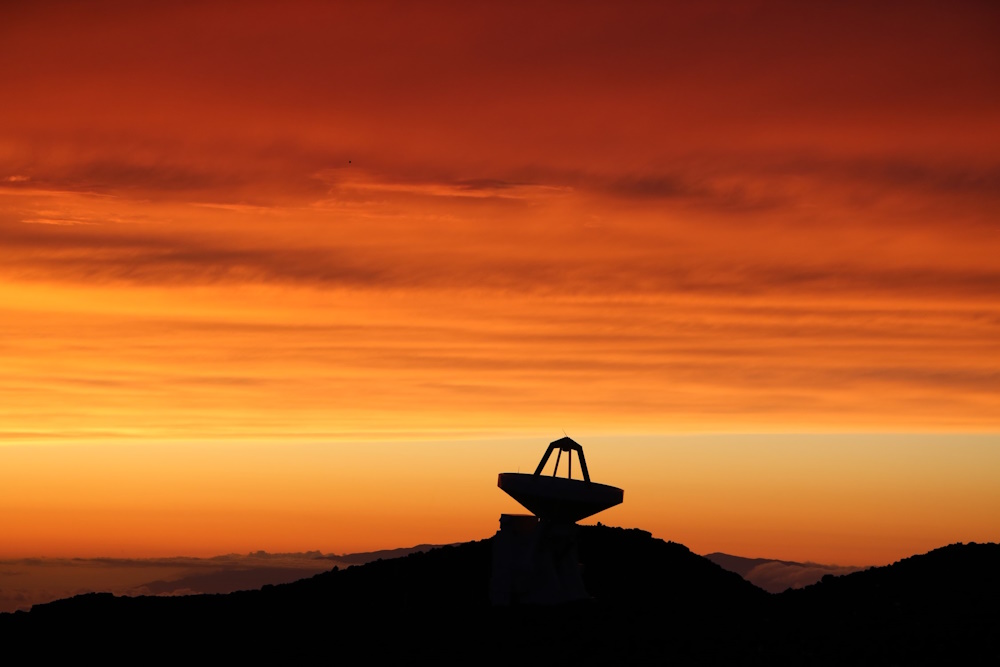
Astronomy Honourable mention 'Curiosity' by Franziska Schmidt. 'In April 2018, I spent 7 nights working as a visiting astronomer at the James Clerk Maxwell telescope on top of Mauna Kea in Hawaii. During that time, the weather ranged from "quite unpleasant" to "evacuating the summit in the middle of the night due to snow storms". Hopes weren't high for my last night which coincided with this year's VLBI run (a collaboration of almost a dozen telescopes all over the world pointing towards the same sources in the sky). However, shortly after arriving for our shift, the sky cleared and we were rewarded with an absolutely breathtaking view as the sun went down behind the busy SMA telescopes, one of which is shown in the photograph. The picture was taken with a Canon EOS 750D, 1/100s exposure time, ISO 320, 64mm focal length, no post-processing.'
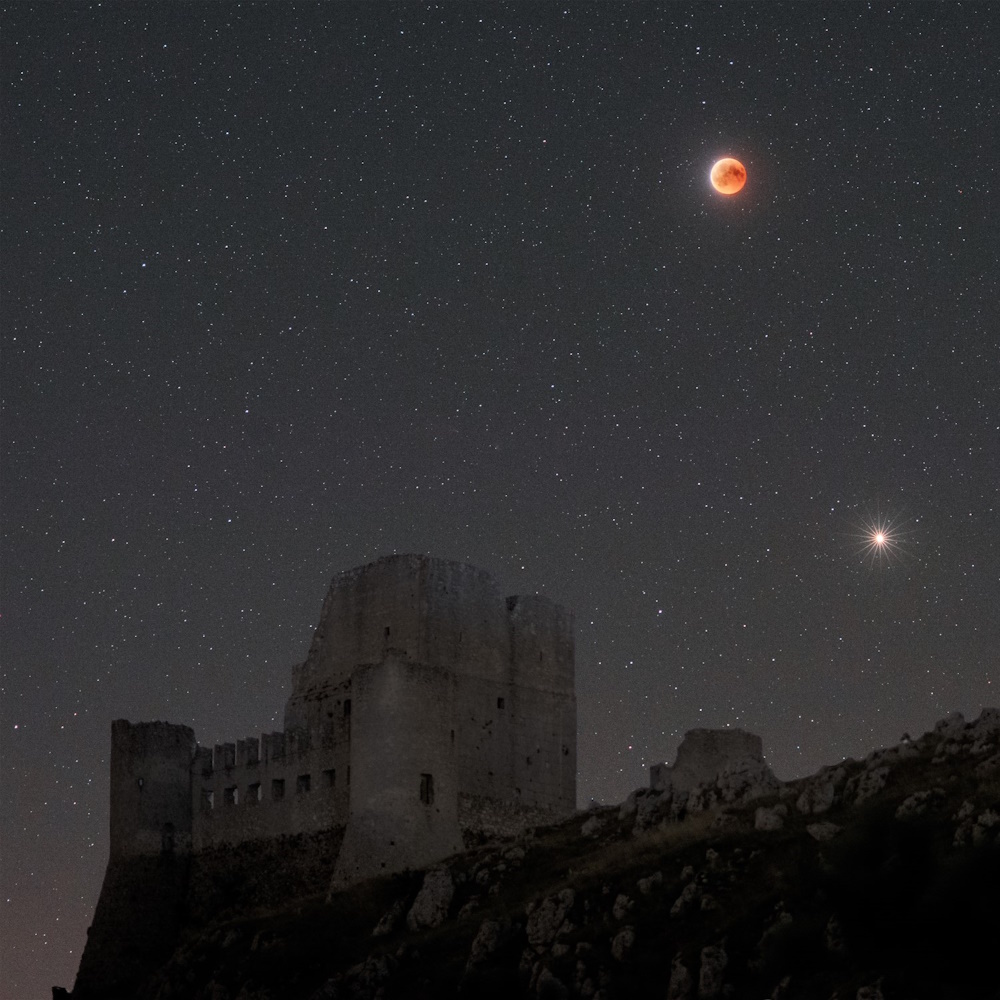
Astronomy Honourable mention 'Eclipsed Moon with Mars in the starry night above Rocca Calascio castle ruins' by Gianluca Li Causi. 'The phase of totality of the lunar eclipse of 27 July 2018 about to finish in the night sky crowded with stars above the ruins of Rocca Calascio castle, in Italy. The Earth's atmosphere refracts the long wavelength part of the sunlight painting the Moon in a bright orange color which compares to the red shining Mars, next to its opposition phase in respect to our planet. To shoot this photograph I carried my equatorial mount on top of the mountain for tracking the sidereal motion, so avoiding the motion-blur caused by Earth rotation during the 10 seconds exposure time. I adopted the common processing suited for astronomical nightscapes of this kind, i.e. shoot a second 10 seconds non-tracked photo for the ground and the castle, and a short 1 second shot for the Moon's surface, and combine the images via masked stacking. Usual contrast enhancement of the stars is finally applied to mimic the eye's perception. Camera: Nikon D800, Lens: 85mm/1.8 @F/5, Exposure: 3200 ISO, 2x10 sec + 1 sec.'

